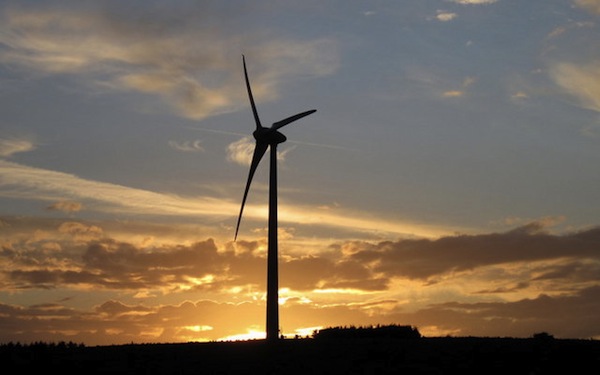
New research suggests the whole world could switch to renewable energy sources using current tech in just 20 to 40 years. It would cost no more than current energy, and would have big economic and eco payoffs. The only barriers are down to social, business, and political inertia.
We all know about renewable energy--it's been around for years, and is key to solving the global warming (and end-of-oil) crisis. Nowadays it's good to be green, and research into the millions of different aspects of the tech is skyrocketing. But a Stanford research team has just compiled an innovative, lateral-thinking study that says even using current available technology the entire world could switch 100% of its energy needs to renewable sources in just a handful of decades. How is this possible?
Current tech is good enough
The research from Mark Z. Jacobson and team involves making all new energy production plants use renewable energy by 2030, and then converting older existing plants by 2050. In the new world order, almost everything would run off electricity. Ninety percent of the production would come from windmills and solar energy plants (already very well established technologies) and the remaining 10% would come from hydroelectric power, geothermal, and wave/tidal power. Mobile things--cars, trains, ships and such--would run on hydrogen-powered fuel cells, and aircraft would burn hydrogen fuel. The hydrogen itself would come from green-electric generation processes.
All of this plan requires no more than a dedicated push to exploit existing technology and to network it all together in an intelligent way--because demand varies from place to place, throughout the day, and as seasons change, and the sun, wind, and waves don't necessarily give power all the time, everywhere. "If you combine them as one commodity and use hydroelectric to fill in gaps [as it's a reliable battery-like resource], it is a lot easier to match demand," Jacobson notes. A supergrid, with long-distance links, international cooperation and really smart energy management is needed. (Good job we're already building one).
Will it cost more?
Nope. Making the changes will take time, effort and money--because you have to build a lot of new equipment, and link up power grids across the world. Spinning up green-power industries to build devices at a global scale will also cost money, as will winding down and deconstructing the infrastructure in place to support coal, oil, gas and even nuclear electricity generation.
But "when you actually account for all the costs to society--including medical costs--of the current fuel structure, the costs of our plan are relatively similar to what we have today," according to Jacobson. That medical reference is to the health benefits of reducing pollution on a global scale, as well as side-effects like deaths from warming-induced natural disasters.
Will it cost more in the long run?
Nope, it may cost less. Due to the incontrovertible laws of thermodynamics and other bits of physics, "heat engines" like the non-renewable power stations and car engines we run today are way less energy efficient than an all-electric process. The Stanford plan suggests global energy needs would drop by 30% due to this efficiency boost, meaning we'd actually need less power--and if the business models evolve to support this norm, individuals may pay less for their energy.
Won't we pepper the Earth with windmills and solar farms and hydroelectric dams?
Nope, Stanford's plan would require 0.4% of the world's land (mainly for solar power) and the spacing between windmills accounts for another 0.6%--although you can use this area for farming and catering for other needs. One percent of the windmills are already in place, and Jacobson notes "the actual footprint required by wind turbines to power half the world's energy is less than the area of Manhattan."
Considering how much space is taken up by power stations and coal mines--facilities that would be closed in the plan--this isn't too much of a sacrifice. And a significant share of the wind farms could be offshore, to satisfy NIMBYism.
Why don't we do it then?
Inertia. We're all used to the current way of things, and rethinking everything from how your car works to looking at a landscape where power windmills go from rare to the norm involves a big effort--a "large scale transformation" on a global scale. Governments are notoriously slow-footed when it comes to this sort of change, and the Stanford plan involves so many innovations and international cooperation that the complexity is almost beyond imagination.
Existing businesses who rely on coal, oil, gas (and their byproducts, like the airline industry's need for aviation fuel) will be reluctant too.
But we've done similar things, as Jaconson notes--it's an effort "comparable to the Apollo moon project or constructing the interstate highway system," just compressed into a short timescale and requiring action from a majority of nations.
To read more news on this, and similar stuff, keep up with my updates by following me, Kit Eaton, on Twitter.
[Image: Shooter's Bottom wind turbine at dusk (Sharon Loxton) / CC BY-SA 2.0]

Comments(0)